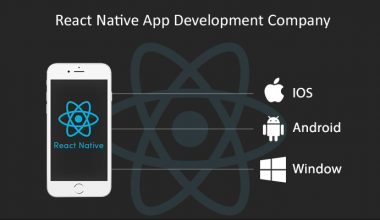
There’s a chance Google won’t support or even advise a specific Android architecture. On the other hand, Apple suggested the MVC method for UIKit, although their suggestion created a lot of discussions and was criticized as being a terrible substitute by many experts.
In this blog, we’ll explore the features of a solid architecture for developing mobile applications.
What makes a good mobile app architecture
Good mobile application architecture will ensure that components have numerous layers of responsibility and will enforce programming best practices like SOLID and KISS. By fulfilling these requirements, you may speed up the creation and make future maintenance considerably simpler, saving you time and money.
For mobile applications, a carefully chosen architecture along with platform-specific technology (like Swift for iOS or Kotlin for Android) will be the greatest option for efficiently resolving complicated business problems. By doing this, you’ll be able to steer clear of a lot of issues brought on by hybrid technologies’ peculiarities. In the long run, it will unquestionably be a time and money-saving strategy for platforms like iOS or Android.
Thanks to such an assumption, the common goal can be achieved in a unified way, which will result in more time efficiency. One of the most crucial features of good architecture is responsibility layer separation. Such a division will be key to reducing the context and extent of errors.
A clearly defined architecture makes work easier and faster. Developers and managers have better control over the work and the data flow in the application. It makes testing more efficient and increases the quality of both management and the product.
Looking at a three-layer model, you can see that implementation of each of the layers will be dependent on its purpose or project scope.

The presentation layer
The presentation layer is impacted by how screen designs function. On the other side, business logic is reliant on the kind of data that the data layer will provide and how it must be handled in order to fulfill the goals of the presentation layer. Last but not least, it is the data layer’s responsibility to manage the data sources, synchronize them, and feed them to higher levels.
The data layer
Its most restricted scope makes it the ideal starting point for optimization. Before we can start optimizing the data layer, we must select a programming architecture that will solve common problems and make our work easier and faster. For mobile projects, the data layer design pattern that works well is known as the “Repository pattern.”
The Repository pattern
By using this method (a well-known pattern), more issues can be solved creatively. In this situation, the Repository pattern will enable you to develop logic that will be in charge of giving the business layer well-mapped data, and any particular implementations of data sources may be readily changed without having any effect on the business logic layer. Again, a wise pattern choice allowed us to save time and money. Similar methods, such as MVP, MVVM, MVI, etc., are also available for presentation layers. This will simplify the work by finding a solution to an additional set of issues in a separate area.
Why do companies undervalue mobile app architecture?
The approach to mobile app architecture has changed in recent years. Proven patterns and standards are given more consideration by developers, yet there are still many engineers who don’t adhere to best practices. Many mobile apps have poor architecture, low-quality source code, or even antipatterns at their core. Such specialized applications are difficult to maintain and advance. The time and cost of development can be significantly increased by poor architecture.
Numerous sources also suggest avoiding native corporate mobile development, which is typically regarded as time-consuming and challenging. Use cross-platform development tools like React Native instead of native code, which requires at least two developers—one for each platform. Hybrid technologies undoubtedly provide cost reduction, but not all applications are best suited for them. Ignoring this could result in several issues with the development of mobile applications.
Challenges with the architecture of mobile applications
Selecting the appropriate architecture ought to be a need and a key component of the design and planning stage of software development. However, architecture is frequently disregarded by developers because of their carelessness, haste, inexperience, lack of knowledge, or disregard for providers (like Google). Major issues with software arise from apps’ (not only mobile applications’) lack of architecture:
- It will be more susceptible to errors.
- It will be challenging to develop and stay consistent.
- Less readable code.
- It can be challenging to have numerous developers work on it simultaneously.
- It is more difficult to test source code that lacks architecture or design patterns, which leaves important functionalities without unit tests. Software maintenance is challenging due to a lack of tests (e.g. no regression control, much harder refactoring or bug fixing, etc.).
Building without foundations would lead to more issues as the building grew, similar to starting a software project without clear architecture or design patterns. Beginner managers or developers may believe that a method without architecture is more expedient. But it quickly becomes clear that it is a dead end. Adding architecture or patterns to such programming is typically too late. The scale and complexity of the project grow along with these issues.
In Summary
A wisely planned architecture helps to avoid many issues with development and maintenance. Additionally, it gives the project’s development process and overall structure. It is crucial for creating and managing projects since it enables you to enhance or correct faulty or missing architecture. This is another reason why, in our opinion, selecting an architecture needs to be a crucial component of every software project’s planning stage. We anticipate that these few pointers will make custom application development for your project or application easier and save you a massive amount of time.



